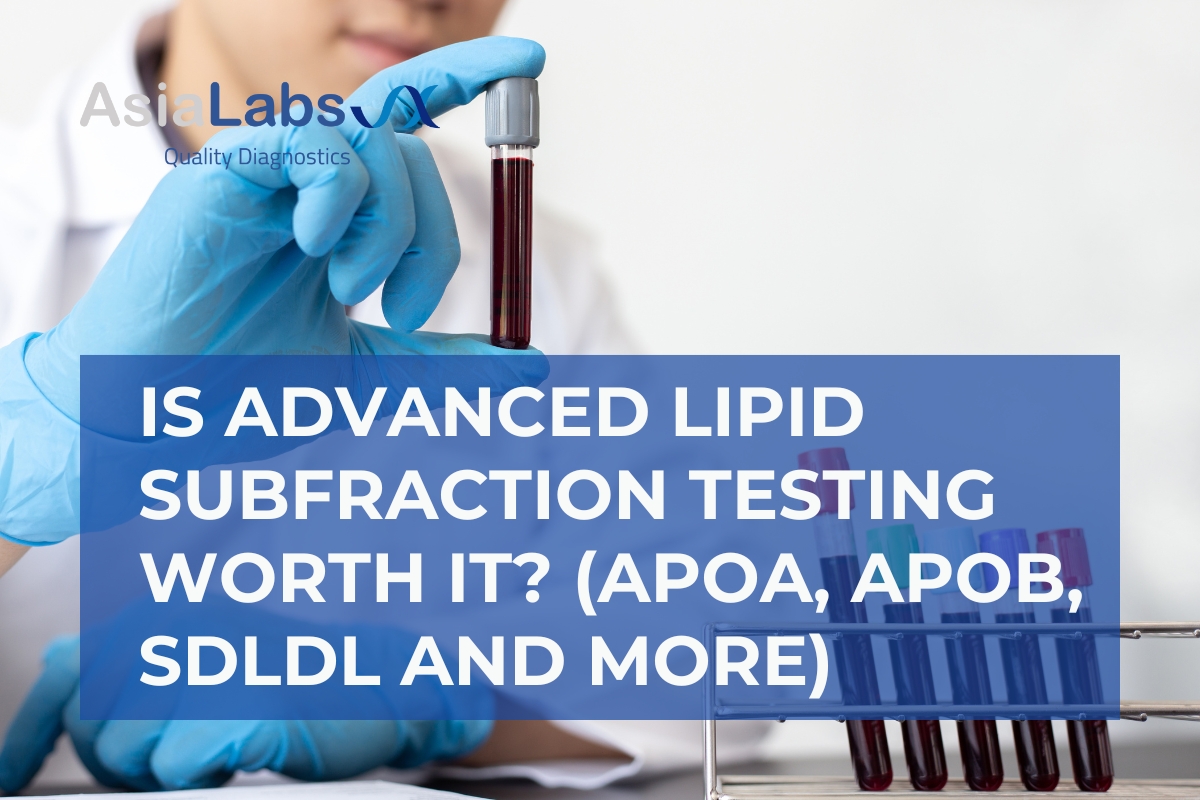For decades, the standard lipid panel—measuring total cholesterol, LDL, HDL, and triglycerides—has been the backbone of cardiovascular risk assessment. These numbers guide millions of treatment decisions every year, from statin prescriptions to lifestyle interventions. But as our understanding of heart disease deepens, it’s become clear that these traditional markers don’t always tell the whole story. For certain patients, especially those with a strong family history, early heart attacks, or resistance to standard therapies, advanced lipid subfraction testing can provide crucial, actionable insights.
The Limits of the Standard Lipid Panel
The standard lipid panel is a valuable tool, but it has its limitations. It assumes that all LDL cholesterol is equally dangerous and that a “normal” LDL level means low risk. In reality, cardiovascular risk is far more nuanced. Some patients with “normal” LDL still experience heart attacks or strokes, while others with elevated cholesterol never develop symptoms. Why the difference? The answer often lies in the details that standard panels miss.
What Is Advanced Lipid Subfraction Testing?
Advanced lipid profiling goes beyond the basics to analyze the size, density, and composition of cholesterol-carrying particles in the blood. At AsiaLabs, our advanced lipid panel includes:
-
Apolipoprotein A1 (ApoA1): The main protein component of HDL (“good” cholesterol), which helps clear cholesterol from the bloodstream.
-
Apolipoprotein B (ApoB): The main protein in LDL and other atherogenic particles. Each atherogenic particle contains one ApoB molecule, making ApoB a more precise measure of the number of harmful particles than LDL cholesterol alone.
-
Small Dense LDL (sdLDL): A subtype of LDL that is particularly prone to penetrating artery walls and triggering plaque formation. High levels of sdLDL are linked to greater plaque instability and increased risk of early cardiovascular events.
-
Lipoprotein(a) [Lp(a)]: A genetically determined particle that increases cardiovascular risk independently of other cholesterol measures.
Why Consider Advanced Lipid Testing?
1. Unexplained or Early Heart Disease
Some patients experience heart attacks or strokes at a young age, or have a strong family history of cardiovascular disease, despite having “normal” standard lipid panels. Advanced testing can reveal hidden risks, such as elevated ApoB or sdLDL, that would otherwise go unnoticed.
2. Discordance Between LDL and ApoB
It’s possible for a patient to have a low LDL cholesterol but a high ApoB. This discordance means that, although the cholesterol content of LDL particles is low, the actual number of atherogenic particles is high—putting the patient at greater risk than the standard panel suggests. Studies show that ApoB is a stronger predictor of cardiovascular events than LDL cholesterol alone.
3. Familial Hypercholesterolemia and Genetic Risk
Patients with familial hypercholesterolemia or a strong genetic predisposition may have elevated Lp(a) or sdLDL, both of which are associated with aggressive, early-onset heart disease. Identifying these markers can prompt more intensive management and cascade screening of family members.
4. Borderline or Complex Cases
For patients whose standard lipid results don’t clearly indicate whether to start or intensify therapy, advanced testing offers additional data. For example, a patient with borderline LDL but high sdLDL or ApoB may benefit from more aggressive treatment.
The Clinical Impact: Real-World Scenarios
Consider a young patient who has suffered a heart attack but whose LDL cholesterol is within the recommended range. Standard therapy might suggest no further intervention is needed. However, advanced lipid testing reveals high ApoB and elevated sdLDL, indicating a high number of small, dense, atherogenic particles. This information supports intensifying therapy and monitoring, potentially preventing further events.
In another case, a patient on maximum statin therapy still has a high ApoB despite controlled LDL. This suggests residual risk and may prompt the addition of non-statin therapies or lifestyle changes.
AsiaLabs: Precision Cardiovascular Risk Profiling
At AsiaLabs, we believe that cardiovascular risk assessment should be as individualized as the patients we serve. Our advanced lipid panel is performed using state-of-the-art technology, with results delivered quickly and clearly. We don’t just measure risk—we help decode it, offering clinicians and patients a deeper understanding of what’s really happening beneath the surface.
Who Should Consider Advanced Lipid Subfraction Testing?
-
Young patients with myocardial infarction or stroke
-
Individuals with a strong family history of heart disease
-
Patients with familial hypercholesterolemia
-
Those with unexplained or persistent risk despite standard therapy
-
Borderline cases where the next treatment step is unclear
Conclusion: When More Information Means Better Care
Advanced lipid subfraction testing isn’t necessary for every patient. For routine risk assessment and monitoring, the standard lipid panel remains a reliable tool. But for those with unexplained risk, early events, or complex family histories, digging deeper can make all the difference. By identifying hidden risks and clarifying treatment decisions, advanced testing empowers clinicians to provide truly personalized cardiovascular care.
With AsiaLabs, you gain access to the latest in lipid science—ensuring that your patients’ risk is not just measured, but truly understood. For those who need answers beyond the basics, advanced lipid profiling is not just worth it—it’s essential.

